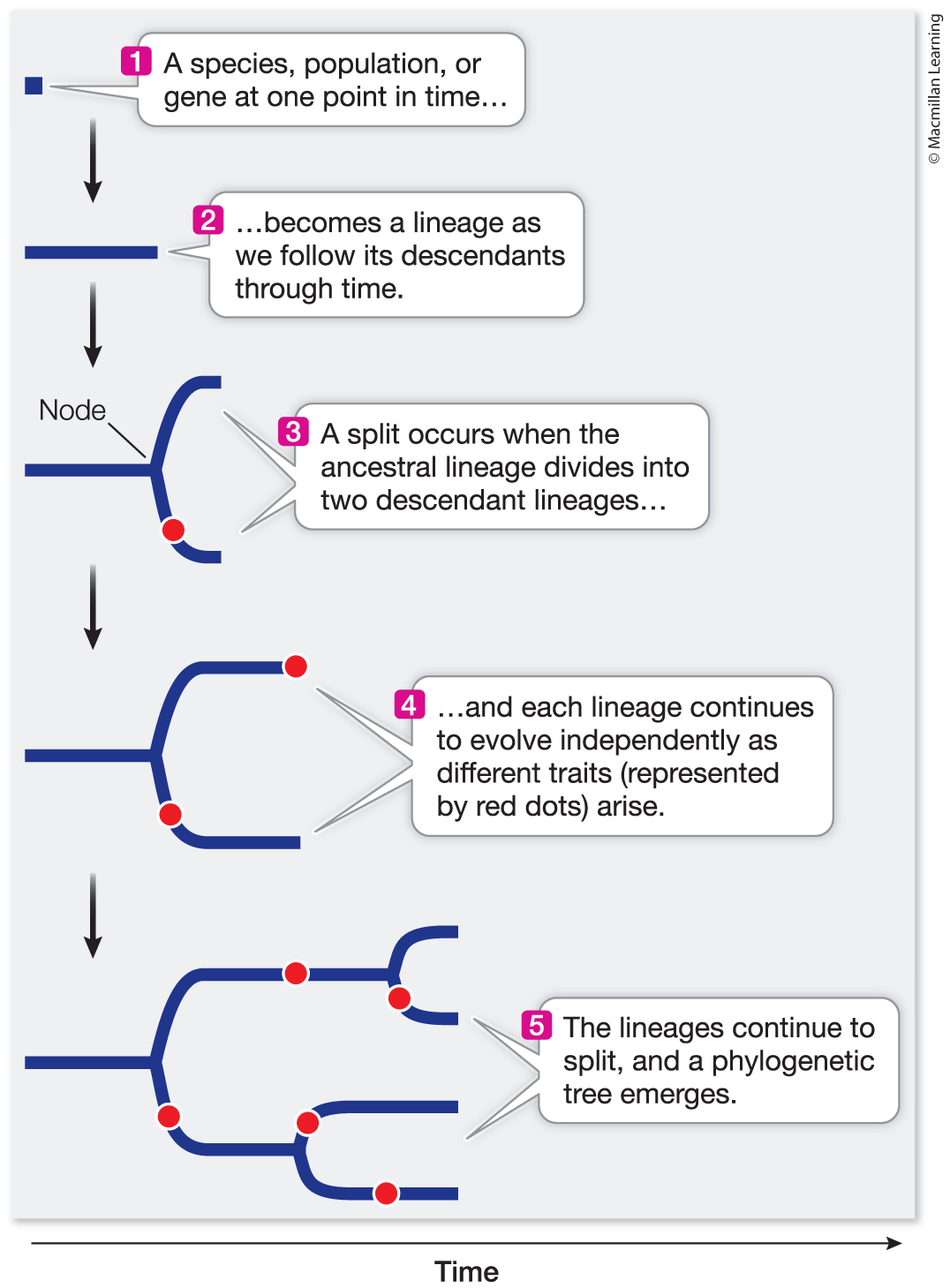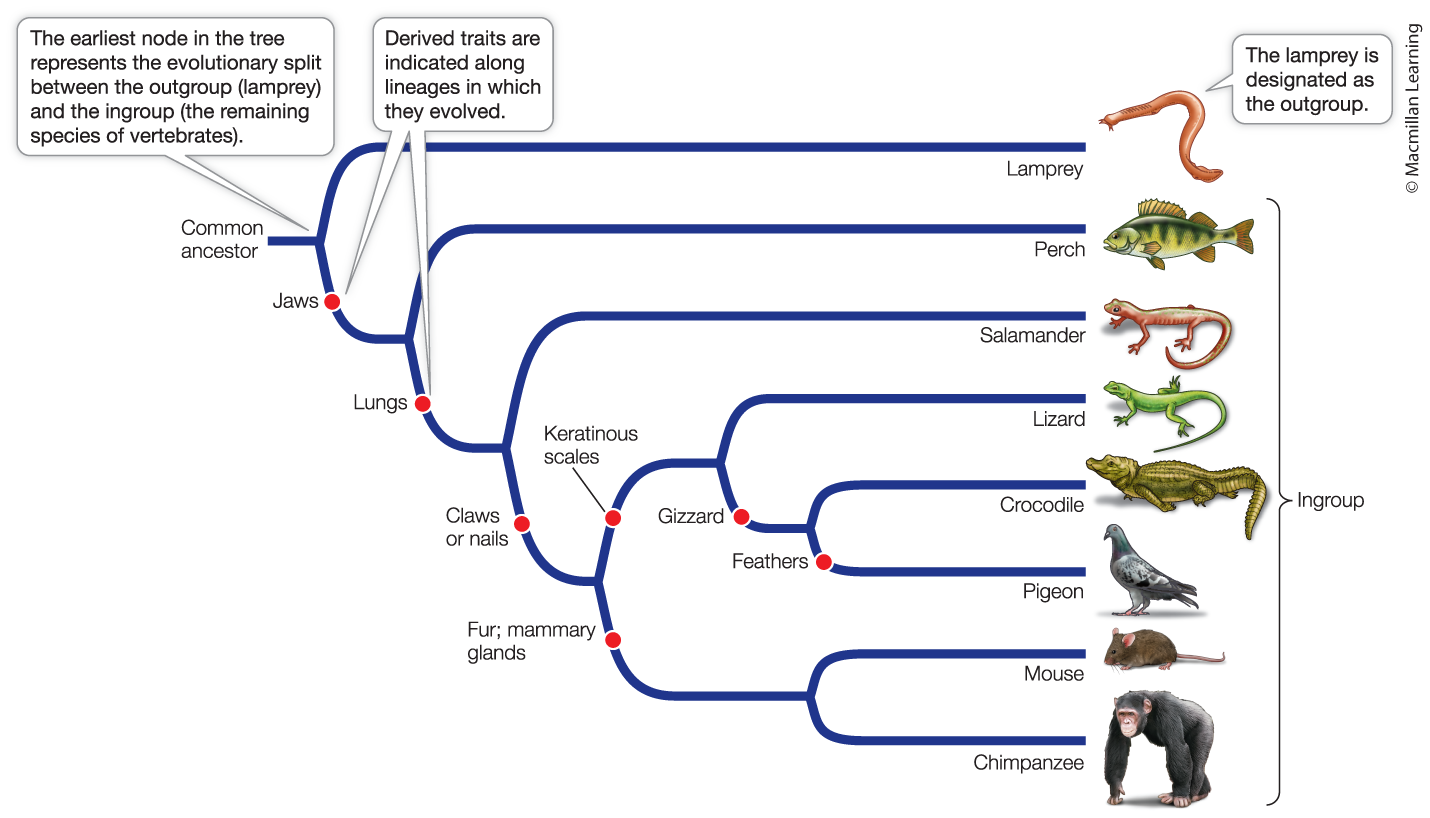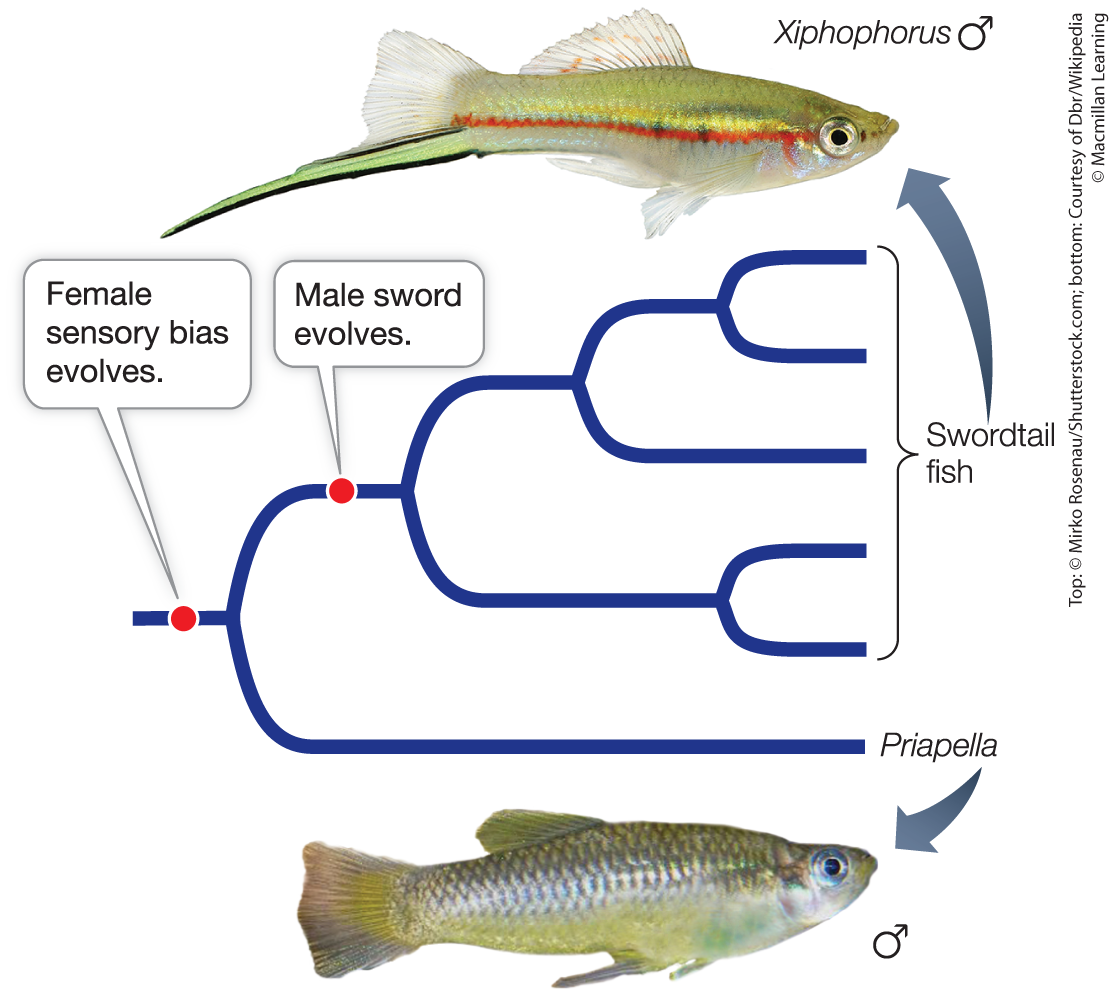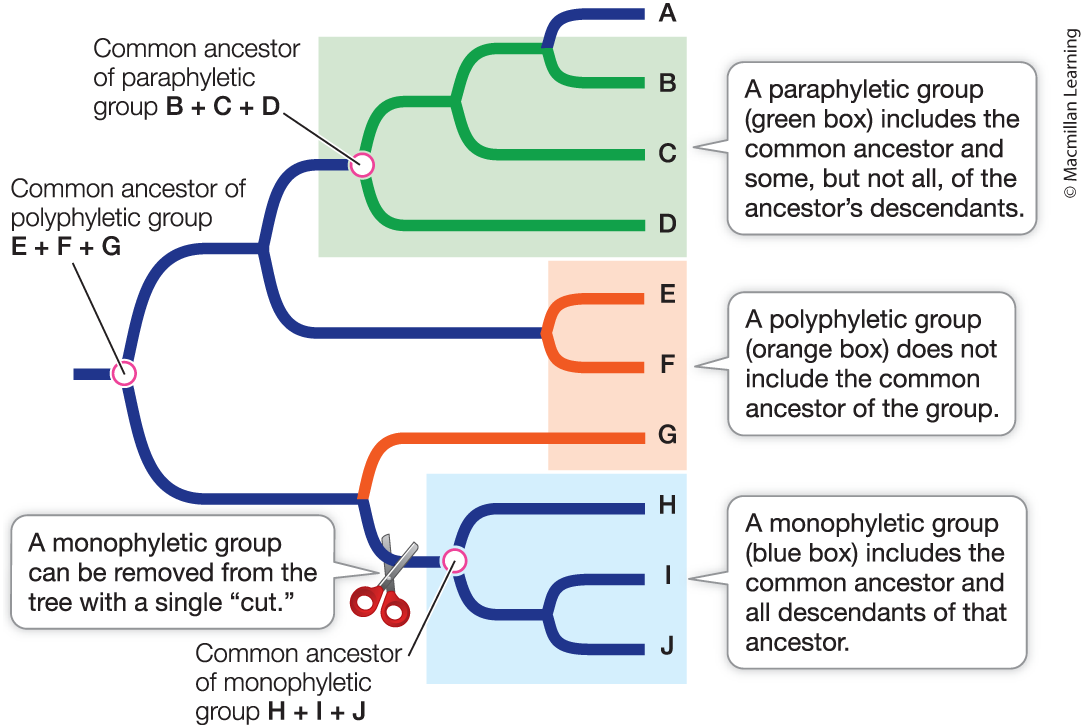Principles of Life, Ch. 14 Reading
14.1 All of Life is Connected through Its Evolutionary History
Phylogeny: The evolutionary history of a particular group of organisms or their genes.
Phylogenetic Tree: A graphic representation of the lines of descent among organisms or their genes.
Phylogenetic trees depict evolutionary relationships among lineages
- Lineage: A series of populations, species, or genes descended from a single ancestor over evolutionary time.
- An event that splits a lineage is called a node

- A phylogenetic tree may portray the evolutionary history of all life forms.
- Root: In reference to phylogenetic trees: the base (oldest) part of the tree
- The order in which nodes are placed along the horizontal (time) axis has meaning, but the vertical distance between the branches does not.
- Taxon: A biological group (typically a species or clade) that is given a name.
- Clade: A monophyletic group made up of an ancestor and all of its descendants; Any taxon that consists of all the evolutionary descendants of a common ancestor
- Homologous Features: A similarity between two or more features that is due to inheritance from a common ancestor; e.g. wings
Derived traits provide evidence of evolutionary relationships
Each character of an organism evolves from one condition (the ancestral trait) to another condition (the derived trait).
Ancestral trait: The trait originally present in the ancestor of a given group; may be retained or changed in the descendants of that ancestor.
Derived trait: A trait that differs from the ancestral trait.
Synapomorphies: A trait that arose in the ancestor of a phylogenetic group and is present (sometimes in modified form) in all of its members, thus helping delimit and identify that group. Also called a shared derived trait.
Similar traits in unrelated groups can develop because…
Convergent evolution: Independent changes to the same state or trait in two or more groups of organisms.
- For example, although the forelimb bones of bats and birds are homologous, having been inherited from a common tetrapod ancestor, the wings of bats and birds are not homologous because they evolved independently from the forelimbs of different nonflying ancestors
- Analogous: similar structures found in two or more groups of organisms, but with separate, independent evolutionary origins.
Evolutionary reversal: The reappearance of an ancestral trait in a group that had previously acquired a derived trait.
Homoplasies: The presence in multiple groups of a trait that is not inherited from the common ancestor of those groups. Can result from convergent evolution, evolutionary reversal, or parallel evolution.
\n
14.2 Phylogeny Can Be Reconstructed from Traits of Organisms
Shared traits reflect common ancestry
- Ingroup: In a phylogenetic study, the group of organisms of primary interest
- Outgroup: a group of organisms used as a point of reference for comparison with the groups of primary interest
- The root of the tree is located between the ingroup and the outgroup

Parsimony provides the simplest explanation for phylogenetic data
- Parsimony Principle: The principle that states that the preferred explanation of observed data is the simplest explanation.
- the best hypothesis under the parsimony principle is one that requires the fewest homoplasies
- This application of parsimony is a specific case of a general principle of reasoning called Occam’s razor: the best explanation is the one that best fits the data while making the fewest assumptions.
Phylogenies are reconstructed from many sources of data
- Any trait that is genetically determined, and therefore heritable, can be used in a phylogenetic analysis.
- Morphology: The scientific study of organic form, including both its development and function; the presence, size, shape, and other attributes of body parts
- Cons… Some taxa exhibit little morphological diversity, despite great species diversity; few morphological traits can be compared across distantly related species (earthworms and humans); some morphological traits are because of environment, not genetics
- Development
- Some things have features that are present only in the embryonic stage
- Paleontology
- When did lineages diverge
- Behavior
- Molecular data (DNA)
The accuracy of phylogenetic methods can be tested
\n
- \
\n
- \
14.3 Phylogeny Makes Biology Comparative and Predictive

- Molecular clock: The approximately constant rate of divergence of macromolecules from one another over evolutionary time; used to date past events in evolutionary history.
14.4 Phylogeny Is the Basis of Biological Classification
Binomial nomenclature: Phylogeny Is the Basis of Biological Classification
Linnaean classification is based on standard taxon ranks
- Genus: A group of related, similar species recognized by taxonomists with a distinct name used in binomial nomenclature.
- In the Linnaean system, species and genera are further grouped into a hierarchical system of higher taxonomic categories. The taxon above the genus in the Linnaean system is the family.
- the suffix “-aceae” is used for plant family names and “-idae” is for animals
- families are grouped into orders, orders into classes, classes into phyla (singular phylum), and phyla into kingdoms

- Monophyletic: Pertaining to a group that consists of an ancestor and all of its descendants.
- Polyphyletic: Pertaining to a group that consists of multiple distantly related organisms, and does not include the common ancestor of the group.
- Paraphyletic: Pertaining to a group that consists of an ancestor and some, but not all, of its descendants.
Several codes of biological nomenclature govern the use of scientific names
The rules of biological nomenclature are designed so that there is only one correct scientific name for any single recognized taxon, and (ideally) a given scientific name applies only to a single taxon (that is, each scientific name is unique).
\n